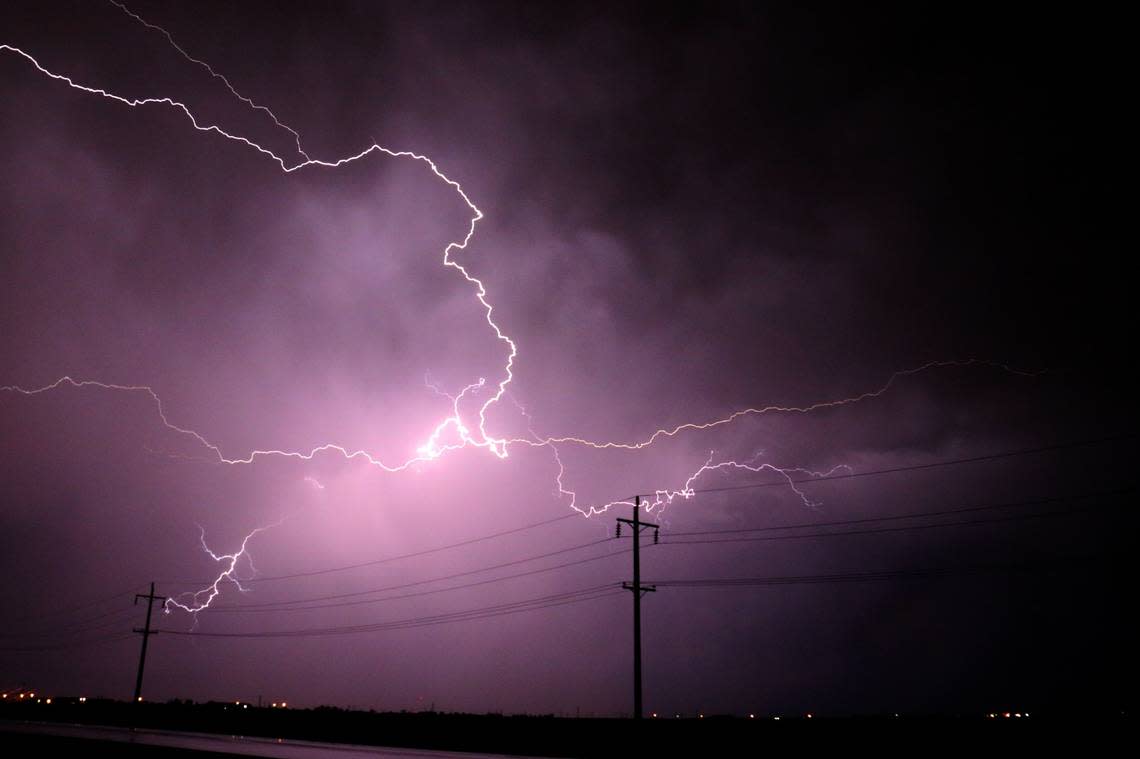North Texas under a severe thunderstorm watch until Thursday night, according to the NWS

A severe thunderstorm watch was issued by the NWS Fort Worth TX on Thursday at 5:12 p.m. in effect until 11 p.m. The watch is for Anderson, Bell, Bosque, Collin, Coryell, Dallas, Delta, Ellis, Falls, Fannin, Freestone, Hamilton, Henderson, Hill, Hopkins, Hunt, Kaufman, Lamar, Lampasas, Limestone, McLennan, Mills, Navarro, Rains, Rockwall and Van Zandt counties.
This watch is in effect until 11 p.m.
How to react when facing a lightning hazard?
Around 25 million lightning strikes occur in the United States every year, with most taking place during the summer months. The NWS reports that these strikes result in about 20 fatalities annually. The probability of lightning strikes rises as a thunderstorm approaches and peaks when the storm is directly above. As the storm moves away, this likelihood decreases.
Here are suggestions for staying safe during a thunderstorm:
• To minimize risk of being struck by lightning, when going outside, have a plan to get to a safer place.
• If the sky becomes menacing and thunder becomes audible, seek out a safe place to seek shelter.
• Once indoors, avoid touching corded phones, electrical equipment, plumbing, and windows and doors.
• Wait for 30 minutes after the final lightning or thunder before heading outside again.
If finding indoor shelter is not an option:
• Stay away from open fields, hill summits, or ridge tops.
• Stay away from tall, isolated trees or other tall objects. If you are in a forest, stay near a lower stand of trees.
• If you are with a group, fan out to stop the current from transmitting between members.
• If you are camping in an open area, set up camp in a valley, ravine, or other low area. Remember, a tent offers no protection from lighting.
• Keep a distance from water, wet articles, and metal objects. While water and metal do not draw lightning, they are proficient conductors of electricity.
What steps to follow when driving in the rain?
• Turn on headlights — Even in daylight, using headlights can help improve visibility and let other drivers know where you are.
• While driving — Stick to the middle lanes and stay on elevated ground. Rainwater tends to accumulate at the road edges.
• Avoid puddles — Driving into puddles or low rainwater areas can lead to vehicles hydroplaning or losing control.
• Maintain a safe distance from large vehicles — Trucks or buses can produce a water spray that hampers visibility.
• Steer clear of flooded areas — When coming to a flooded road, turn around and head back. Flash flooding currents are strong and can sweep drivers off roadways. Driving through deep water can also affect a vehicle’s mechanical and electrical systems.
What is hydroplaning?
Hydroplaning occurs when a vehicle begins to slide uncontrollably on wet roads.
This happens when water in front of the tire builds up faster than the vehicle’s weight can push water out of the way. The water pressure then causes the vehicle to rise and slide on a thin layer of water between the tires and the road, making the driver lose control. Hydroplaning is most commonly attributed to three factors:
1. Vehicle speed — When a vehicle’s speed increases, the tire-traction grip and ability to control the vehicle decreases. Drive at a reduced speed during wet weather.
2. Water depth — The deeper the water, the sooner a vehicle loses traction on the road. It doesn’t matter how deep the water is, even a thin layer can lead to hydroplaning.
3. Tire tread depth — Checking your tire tread before hitting the road is important, as low or no tread can lead to sliding.
In the event of your vehicle hydroplaning, here’s what to know:
• Ease off the accelerator — Step off the gas to slow down the vehicle until the tires find traction.
• Turn into the skid — Turning into the skid can help the vehicle’s tires realign to regain control.
• Make sure the tires reconnect with the road — During the skid, wait until the tires reconnect with the road and then gently straighten the wheels to regain control.
• Brake gently as needed — Brake normally if the vehicle has anti-lock brakes and pump brakes gently if in an older vehicle.
Source: The National Weather Service


